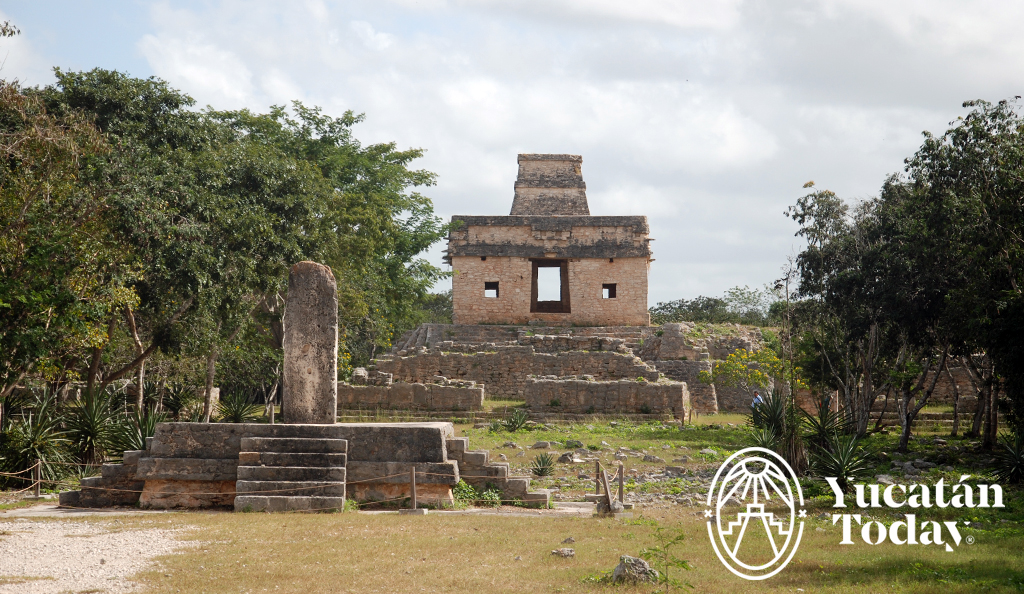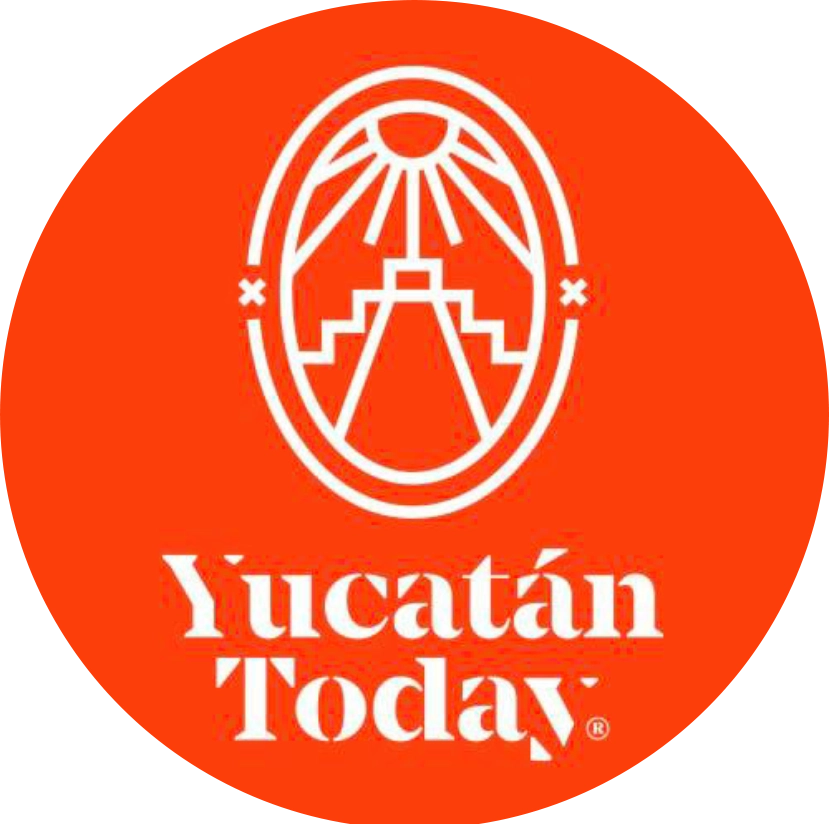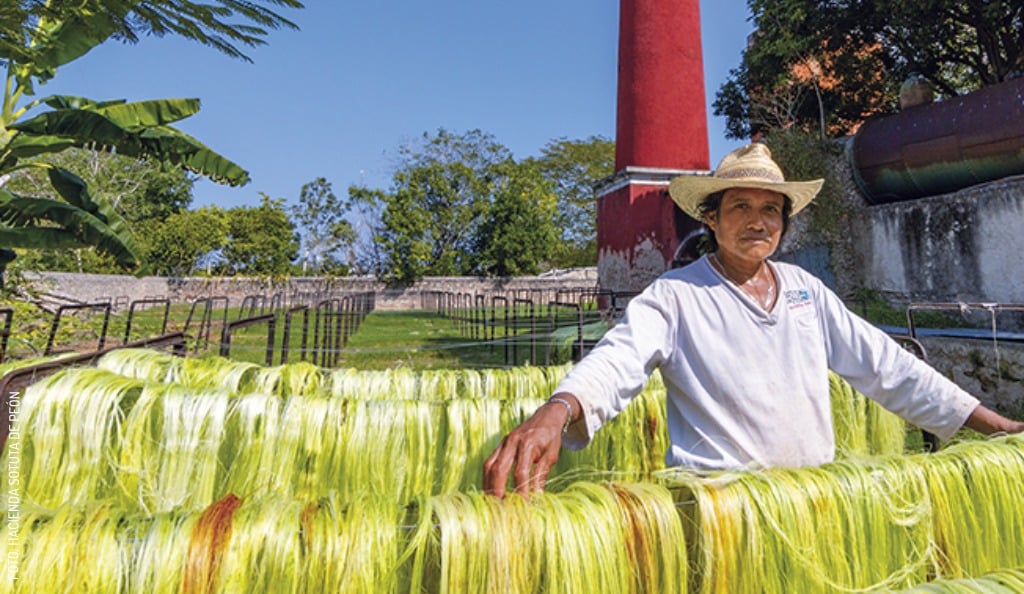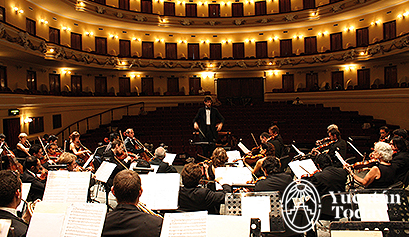
Dzibilchaltún
Dzibilchaltún
(pr. tsee-beel-chal-TOON)
Its proximity to the city of Mérida and its location on the way to the beautiful port of Progreso are just a few of the factors that make Dzibilchaltún the third most visited archaeological site in Yucatán.
A glance at the history of Dzibilchaltún
Dzibilchaltún is one of the oldest—and longest-occupied—settlements in northern Yucatán: it is believed to have been inhabited as early as 600 BCE (though some sources place its occupation much earlier, around 1500 BCE), and it remained populated well after the arrival of the Spanish in the 16th century. At its peak, it covered an area of about 20 km², which is roughly the same size as the city of Mérida today. The name Dzibilchaltún (which was given to it after its rediscovery in the mid-20th century) refers to the stelae found there; it is believed that its original name may have been Ich Kaan Ti’ Jo’, which is also attributed to Mérida.
During the colonial period, what is now the Dzibilchaltún archaeological site was part of the Chablekal estate; evidence of this includes the walls around the cenote, but most notably the Open Chapel. Built and used between 1560 and 1610, this chapel suggests that the site was still inhabited when the Spanish arrived.
The Dzibilchaltún archaeological site
Your visit to Dzibilchaltún will begin by crossing what will eventually operate as archaeology laboratories, leading you to the first structures (the Templo Parado, named so because it was the only one found standing when excavation began in the area in 1941), and then to the beautiful cenote Xlacah (xla’ kaaj, or old town); although it is no longer possible to get close to it (let alone swim), spending a few minutes observing it will be well worth it. You will easily spot a myriad of lilies, among which the deep turquoise of the water stands out, and if you pay attention, you might even see turtles, fish, and occasionally a bird or two.
The most famous structure at Dzibilchaltún is the Temple of the Seven Dolls, which we will discuss further below. However, the Temple of the Seven Dolls is not the only thing you will see here. One of the most memorable structures is the aforementioned Open Chapel; of colonial origin, it was built using stones from the temple that crowned the tallest pyramid that still survives today on the site, located just to the left of the Chapel (if you’re facing it). The Chapel is located in what was the massive Central Plaza of Dzibilchaltún, which is surrounded by several notable structures. To the south, for example, is Structure 44. It does not have visible decoration and is not particularly tall, so it may not catch your attention at first; however, take a closer look: with more than 130 meters in length, it is one of the longest structures in the Maya world.
The Temple of the Seven Dolls at Dzibilchaltún
Like several other structures we can admire today, the Temple of the Seven Dolls was excavated; meaning that there was a newer construction built on top of it, and therefore it is considered a sub-structure. It is believed that the building we see today functioned more as a celestial observatory than as a temple or shrine; its lateral windows mark the sunrise at the northern and southern extremes (i.e., during the summer and winter solstices), and consequently, the sun can be seen "passing through" the central door on the days around the spring and autumn equinoxes.
The Temple of the Seven Dolls also marks the passage of the sun through the zenith: the two days of the year when the sun is directly overhead in Yucatán and no lateral shadow is cast. This phenomenon was of vital importance to the Maya, as the heat generated by the sunlight evaporates large amounts of water, marking the start of the rainy season.
Originally, the temple was decorated with stucco masks (you can see their bases on the doors and corners of the façade) and marine motifs, as well as the bodies of two intertwined serpents. On the south side (to your left if you’re facing the temple), you can still see the remnants of the stucco that represented the serpents’ skin.
Make the most of your visit to Dzibilchaltún
Recently reopened in 2025 after several months, the Dzibilchaltún archaeological site is now debuting a new visitor center, where a café and craft shop are expected to operate in the future. As of February 2025, the Museum of the Maya People is closed, and the state fee is not being charged.
For now, there are no shops, so it’s a good idea to go well-prepared with plenty of water; food is not allowed on the site. Depending on the time of day, you may not find many shaded spots to rest, so a good hat, sunscreen, and sunblock will be very useful to avoid sunstroke. As with all archaeological sites, using repellent and wearing appropriate footwear (closed-toe and non-slip) is always a good idea.
- Meaning of “Dzibilchaltún” in Maya: Place where there is writing on flat stones (ts’íib il chaltun)
- Inhabited period of Dzibilchaltún: 600 BCE - Conquest (from the Preclassic to the arrival of the Spanish)
- Golden age of Dzibilchaltún: 850 - 1100 A.D. (Late/Terminal Classic)
- Location: 15 km (about 9 miles) north of Mérida, off the Mérida - Progreso highway
- Services: Parking, restrooms, guide service. Suitable for children and seniors.
Prices to get into Ek Balam:
-
- Federal fee: $100 pesos
- Seniors over 60, children under 13, retirees, pensioners, people with disabilities, teachers, and active students are exempt from the federal fee.
- All Mexicans and residents of the country are exempt from the federal fee every Sunday.
- State fee: $261 pesos (foreigners), $127 pesos (Mexican citizens)
- Seniors, children under 13, retirees, pensioners, people with disabilities, and teachers are exempt from the state fee.
- Federal fee: $100 pesos
- Opening hours: Every day, 8 am - 5 pm
- Nearby sites and activities:
- Continue north and visit the port of Progreso, where you’ll find the beach, the Meteorite Museum, and a host of activities, restaurants, and much more.
- Back in Mérida, you can visit the Gran Museo del Mundo Maya, where you can learn more about this indigenous group, from ancient times to the present day.
Download your free maps:

Author: Yucatán Today
Yucatán Today, the traveler's companion, has been covering Yucatán’s destinations, culture, gastronomy, and things to do for 37 years. Available in English and Spanish, it’s been featured in countless travel guides due to the quality of its content.
¡Receive the latest articles and much more from the best of Yucatán in your email!
Related articles

Hacienda Sotuta de Peón: Live Henequen Museum
Hacienda Sotuta de Peón Built at the end of the 19th century in Tecoh, Yucatán, is one of the few henequén haciendas which is still in full...
José Peón Contreras Theater
Discover the rich history and cultural significance of Teatro José Peón Contreras, the oldest and most beautiful theater in Mérida, Yucatán.




